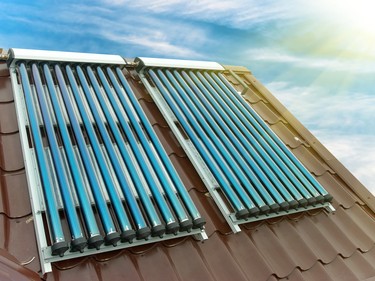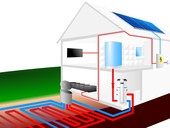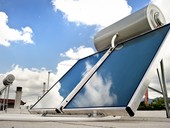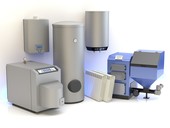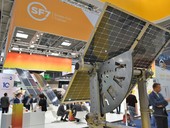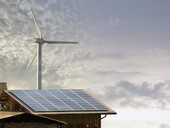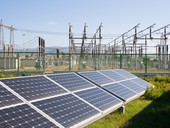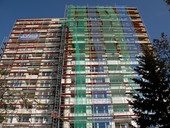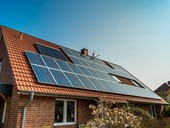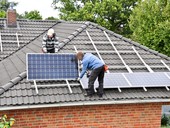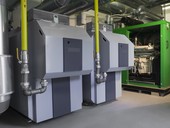The global market for solar thermal collectors has been steadily declining since 2010, but the decline has come to a halt and, with the current trend, growth can again be expected in the coming years.
Archiv článků od 11.12.2018 do 2.12.2019
The paper presents an analysis of PV system usage without a battery storage to cover electricity consumption for single family house with 4 persons and heat pump as a heat source for heating and preparation of domestic hot water. The result of the analysis shows the importance of using a sufficiently short time step of load profiles for correct assessment of solar fraction of PV system. Simplifying chart for fast estimation of solar fraction in a given application (heat pump, user energy) has been developed.
The paper deals with simulation analysis of solar system for domestic hot water preparation for apartment building. The analysis shows the influence of climatic conditions on solar system gains. The aim is to verify whether the level of solar gains can be guaranteed in the Czech Republic's climatic conditions. In discussions over the efforts to guarantee the benefits of a designed and installed solar system, another question arises as to how the total solar radiation changes year-on-year and whether its annual fluctuations can be simply passed on to the solar system's profit.
The authors answer the question how to choose a heat source for a family house built with respect to the current thermal technical requirements. An example is new building of a two-storey family house approximately 20 km south of Brno with a residential part of the house with a square plan of 11 × 11 meters. The evaluation results are compared according to five different criteria.
Photovoltaics has been known for decades, and there have been many discussions about whether and where a power plant with fixed panels or panels with automatic winding to the sun is more economical. While falling panel prices and the latest technical breakthroughs have been progressively sending solar trackers to history, let us try to offer one more idea to the photovoltaic team, who continue to consider trackers as perspective.
The article focuses on the introduction of renewable energy sources (RES) in the energy balance as primary energy sources, during the transformation process and their use for final consumption. The first part is devoted to basic terminology and primary energy sources, the second part focuses on the transformation process and final consumption.
The paper presents results of a study on potential reduction of CO2 emissions of the Czech national building stock until 2075. The calculations were based on datasets provided by Chance for Buildings that modeled five different scenarios of energy savings in the Czech building stock that varied by the depth of the energy retrofitting measures and by the pace of their application. The results were compared to the carbon budget that was set in line with the objectives of the Paris agreement.
The paper deals with the problem of optimal sizing of battery-powered hybrid power systems for HV extraction installations, where electricity consumption diagrams are available and it can be assumed that the nature of the operation will not change when photovoltaic technology is installed with battery storage. This is a difficult task, as each installation is specific to its nature of consumption, energy prices, location and investor requirements. The article outlines how to solve this problem by using the numerical optimization methods implemented in MicrOpt Design, the use of which is shown in a specific example.
The current era is favorable for the expansion of renewable energy sources and their integration into the energy economy of buildings for residential or commercial use. According to the long-term statistics, buildings consume about 40 % of all energy produced. At the same time, the buildings together with the industry provide a huge potential for the installation of renewable energy sources. The article presents advantages and disadvantages of particular types of the most commonly used photovoltaic systems integrated in buildings. It describes the ways to maximize the use of the installed renewable sources, the assessment of the rate of return of the particular types of photovoltaic systems, not counting the subsidy support, and evaluation of the installation complexity (both financial and technical).
Reports on drought in the Czech Republic, as presented in the media and in news releases of government institutions, are overstated. Natural course of climate is not accepted and data on groundwater are distorted. Nobody but ourselves should be blamed for some of the effects of “drought”, which result from a misconduct in drilling and casing installation in wells and boreholes for heat pumps as well as from anthropogenic interventions in landscape. landscape.
The largest market share of new registered passenger battery electric vehicles in Europe is in Norway (31 %), the Netherlands (5 %), Sweden, Austria and France (2 %). The share of electric vehicles in new vehicles registrations remains low in the Czech Republic, reaching 0.27 % in 2018. Policy measures can significantly support adoption of electric vehicles by consumers. Based on a literature review, we discuss a wide range of policy measures to support battery electric vehicles (BEV), including effectiveness of these measures. Further, we describe support measures in the Czech Republic. Last, we aim at the expected trends in BEVs and a policy design that may support to increase market share of BEV technology when undesirable side effects on inequality, public finance and the environment are minimised.
This article describes the conditions for operation of the electricity storage for three main groups: customers, using the electricity storage in order to increase the effectiveness of their own produced electricity by storing the produced electricity for later consumption, business utilities, providing the stored electricity as balance service to electricity traders and business utilities operating the electricity storage as an independent unit, providing balance services to the transmission system operator. The main focus is on the energy license and electricity grid system rules within the Czech applicable laws as well as in the light of the prepared amendments to the applicable laws.
Paper deals with the definition of energy flexible building, its impact on the stability of the grid with the planned increasing share of energy from renewable sources and the possibility of using the heat storage capacity of building structures. Paper further analyzes the selected methodology for evaluation of the energy flexibible building and gives an example of thermally activated building structures.
The paper deals with the analysis of thermal losses of pipe distributions in the small solar system model created in the TRNSYS energy simulation tool. Attention is paid to the impact of heat loss through pipelines on the overall energy balance. Several variants of pipe lengths for one type of system have been selected. The results presented in the articles illustrate the influence of different pipe lengths on heat losses and the consequent impact on the energy balance of the monitored system.
Historic buildings are often classified as highly energy-intensive buildings with low energy efficiency. Thanks to their overall percentage share in the European real estate market, it is logical to focus on these objects with an innovative approach and functional, sensitively aesthetic solutions, thus significantly reducing their energy intensity and increasing their energy efficiency. At the same time, it will enable to meet the new energy targets currently proposed by the European Commission.
zpět na aktuální články
